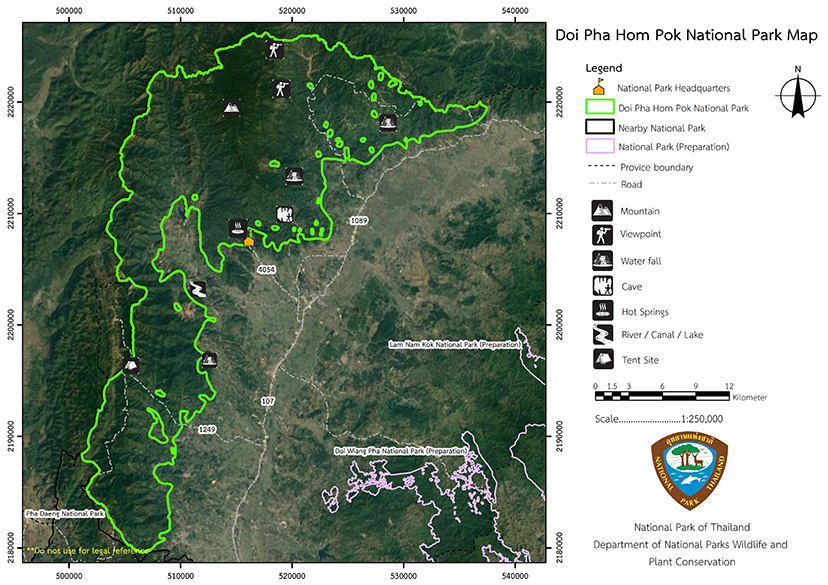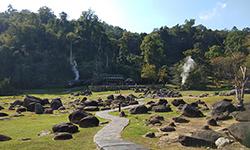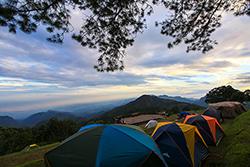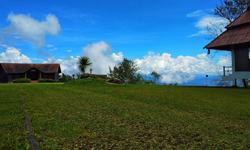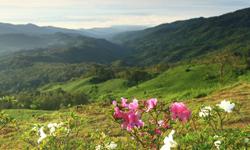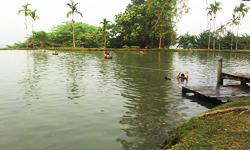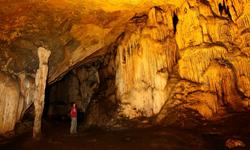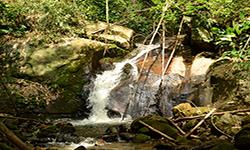Doi Pha Hom Pok National Park
Contact Location : Doi Pha Hom Pok National Park, 224 Moo 6, Pong Nam Ron Sub-district, Fang District, Chiang Mai Province 50110
Telephone Number : (+66) 5208 0801, (+66) 8 4483 4689
Email : doiphahompok.np@hotmail.com
Facebook : Doiphahompok National Park
Information
-Non
Background
In 1968, rangers from the Chiang Mai Regional Forest Office surveyed and decorated it as a resting place. Later that year, in 2524, the Royal Forest Department approved the establishment of that name's "Forest Park." Until 1988, the "Bo Nam Ron Fang Forest Park" encompassed 31 square kilometers or 19,375 rai (31 square kilometers) of Lum Nam Fang National Reserved Forest. The National Park Divisiondispatched officials to take possession of the Bo Nam Ron Fang Forest Park in order to explore and establish a National Park.
In 2000, the Government Gazette, Decree Volume 117, Part 81 Ko, dated September 4th, 2000, designated this National Park as Thailand's 97th National Park. The "Mae Fang National Park" encompasses three Fang Basin National Reserved Forest District in Chiang Mai Province: Mae Ai, Fang, and Chaiprakarn District. The western border with the Union of Myanmar is approximately 70 kilometers long, and the park itself covers an area of approximately 524 square kilometers, or approximately 327,500 rai. The "Fang Hot Springs" and "Doi Pha Hom Pok " are two noteworthy natural features in the area at 2,285 meters above sea level, being Thailand's second highest summit.
Later, on March 14th, 2006, Mae Fang National Park was renamed to "Doi Pha Hom Pok National Park" to resemble the name "Doi Pha Hom Pok." It is an essential and outstanding tourist attraction. On September 26th, 2008, the name was changed again to "Doi Fa Hom Pok National Park." and it has been changed back to use this name Doi Pha Hom Pok until now again.
Note : After paying the entrance fee to the National Park, please carry the receipt for inspection.
327,500 rai (524 square kilometers)
|
|
|
|
|
|
|
|
|
|
|
|
|
|
|
|
|
|
Nature trails ⇔ Forest Viewpoint ⇔ Trekking ⇔ visit Waterfall ⇔ Geological condition ⇔ Observe flowers/plant ⇔ Bird , butterfly , wildlife watching activities ⇔ Mountain biking ⇔ Camping ⇔ Mineral water bathing ⇔ stargazing
Welfare shop : open daily from 08.00 - 16:30 hrs.
National Park Headquarters : AIS, TRUE, DTAC
|
|
The majority of Doi Pha Hom Pok National Park's topography is comprised of a high complex mountain landscape and the Daen Lao Mountains range runs north to south. The elevations are between 400 - 2,285 meters above sea level and Doi Pu Muen, Doi Laem, and Doi Pha Hom Pok are the three most important summits. Numerous waterways originate in the park, including Mae Chai Creek, Mae Sao Creek, Nam Mae Kuem Luang, Nam Mae Hang, and Nam Mae Rang. To the north and west there is a border with Myanmar, the south is bordered by Nong Bua Sub-district, Chai Prakan District in Chiang Mai Province, the east is connected to Fang district, five sub-districts, which include Wiang, Pong Nam Ron, Mon Pin, Mae Sun, and Mae Ngon Sub-ditsrict. Mae Ai District is divided into four sub-districts: Malika, Mae Ai, Mae Sao, and Tha Ton Sub-district; Chai Prakan District is divided into two sub-districts: Nong Bua and Pong Tam Sub-district.
|
|
General Climate: The average annual temperature is 25.4 degrees Celsius. April's maximum temperature is 39.1 degrees Celsius. Between May and September, the rainy season, and there is average rainfall of 1,183.5 millimeter on average. Between November and February, the weather is cold by Thai standards, with temperatures ranging between 14 and 19 degrees Celsius on average. Winter temperatures can drop to around 2 degrees Celsius
|
|
|
|
Forested and Vegetated areas: 1. Deciduous Dipterocarp Forest: This type of forest is found between 400 and 600 meters in elevation and is home to Burma Sal, Burmese Sal, Hairy Keruing, and Cratoxylum formosum (Jacq.) . Wildlife: |
How to get there by car :
From Chiang Mai city, take Highway No. 107 (Chiang Mai-Fang) to Fang District and continue for approximately 3 kilometers on Fang-Mon Pin Road. Then bear right onto 4054 Rural Road, which is approximately 8 kilometers from the Doi Pha Hom Pok National Park Headquarters to the Fang Hot Pond area. Chiang Mai to Doi Pha Hom Pok National Park Headquarters are approximately 160 kilometers, which takes approximately 2 hours and 30 minutes.
How to get there by bus:
The Transport Company Limited and affiliated bus companies operate air-conditioned buses between Bangkok - Fang, Chiang Mai - Fang. A taxi service will transport you the11 kilometers to the Doi Pha Hom Pok National Park Headquarters.
The route to Doi Pha Hom Pok should be taken via the Fang - Ban Huai Bon Road in a four-wheel-drive vehicle. When visitors arrive at Ban Huai Bon, they proceed straight along an 18-kilometer gravel road to the Kio Lom Campground. It is approximately 3 kilometers to the summit and takes 3 hours round trip by foot.
- National Park Ranger Station Do Po No. 1 (Doi Lang)
- National Park Ranger Station Do Po No. 2 (Nong Tao)
- National Park Ranger Station Do Po No. 3 (Namtok Pong Nam Dang)
- National Park Ranger Station Do Po No. 4 (Khrongkan Ban Lek Nai Pa Yai)
- National Park Ranger Station Do Po 5 (Sui Thang)
- Accommodation – Pha Hom Pok 101 (Mae Fang 1)
- Accommodation – Pha Hom Pok 104 (Mae Fang 4)
- Accommodation – Pha Hom Pok 105 (Mae Fang 5)
- Accommodation – Pha Hom Pok 106 (Mae Fang 6)
- Accommodation – Pha Hom Pok 107 (Mae Fang 7)
- Accommodation – Pha Hom Pok 108 (Mae Fang 8)

